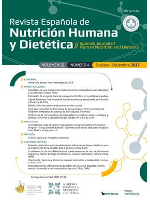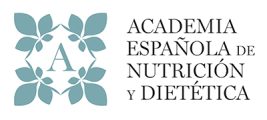Development and optimization of a porridge rich in critical nutrients, for children from 12 to 23 months of age in the Northest region of Argentina, using locally available foods
DOI:
https://doi.org/10.14306/renhyd.29.2.2382%20Keywords:
Infant Food, Nutrients, Vitamins, MineralsAbstract
Introduction: In the Northeast region of Argentina (NEA), children under 2 years of age have micronutrient deficiencies (mainly calcium, iron, and vitamins A and E), while the commonly offered complementary foods tend to have low nutritional quality and inappropriate texture for their age. This study focused on developing a complementary food that guarantees an appropriate density of these micronutrients, which is important to meet their needs in adequate volumes, ensuring textures appropriate for their age, using locally available foods, intended for children aged 12 to 23 months in a situation of nutritional vulnerability.
Methodology: A mixture design was applied using Minitab 18® to formulate porridges using a fixed base of spinach, sesame, and sunflower oil, and variable ingredients such as chickpea, carrot, and whole milk, to maximize the contribution of calcium, iron, vitamins A and E. The theoretical nutritional composition, texture, appearance, moisture, and water activity of the mixtures were analyzed. The nutritional density of the porridges was assessed, and the hardness was optimized based on reference purees.
Results: The design yielded 10 formulations, whose critical nutrient density was higher than the desired minimum. There were no significant differences (p>0.05) between the moisture values of most of the mixtures and the reference purees, however, the aw was higher in all cases. The optimal mix consisted of spinach 42.0 g; sesame 16.0 g; sunflower oil 2.0 g; chickpea 43.4 g and whole milk 16.6 g, with a desirability of 1 and a predicted hardness of 268.2 g.
Conclusions: It was possible to formulate nutritionally and texturally adequate porridge for children aged 12 to 23 months in NEA region, using regional ingredients, and expanding the offer of healthy foods.
Funding: This study was funded by an I+D project and a research grant from the National University of Chaco Austral.
References
(1) Lutter CK, Grummer-Strawn L, Rogers L. Complementary feeding of infants and young children 6 to 23 months of age. Nutr Rev. 2021;79(8):825-46, doi: 10.1093/nutrit/nuaa143.
(2) Dewey KG, Brown KH Update on Technical Issues Concerning Complementary Feeding of Young Children in Developing Countries and Implications for Intervention Programs. Food and Nutrition Bulletin. 2003;24(1):5-28, doi: http://dx.doi.org/10.1177/156482650302400102.
(3) Cuadros-Mendoza CA, Vichido-Luna MA, Montijo-Barrios E, Zárate-Mondragón F, Cadena-León JF, Cervantes-Bustamante R, et al. Actualidades en alimentación complementaria. Acta pediátrica de México. 2017;38(3):182-201, doi: 10.18233/apm38no3pp182-2011390.
(4) Jimenez MD, Miraballes M, Gámbaro A, Lobo MO, Samman NC. Baby purees elaborated with Andean crops. Influence of germination and oils in physic-chemical and sensory characteristics. 2019, doi: 10.1016/j.lwt.2019.108901.
(5) United Nations Children’s Fund (UNICEF) Improving Young Children’s Diets During the Complementary Feeding Period. UNICEF Programming Guidance. New York: UNICEF; 2020.
(6) United Nations Children´s Fund (UNICEF) Fed to Fail? The Crisis of Children’s Diets in Early Life. New York: UNICEF; 2021.
(7) Ministerio de Salud de la Nación Encuesta Nacional de Nutrición y Salud ENNYS Documento de resultados. 2007.
(8) Ministerio de Salud Base de datos de la 2° Encuesta Nacional de Nutrición y Salud (ENNyS2) 2018-2019. 2021.
(9) Zapata ME, Rovirosa AB, Nessier MC, Romero Mathieu N, Gigena JR, Bonet de Viola AM. Desigualdad en las prácticas de lactancia y alimentación complementaria en la Argentina, según nivel de ingresos del hogar en 2018-19. Arch Argent Pediatr. 2024: 122(4):e202310221, doi: 10.5546/aap.2023-10221.
(10) Spipp JP, Riernersman CN, Rivas FP, Calandri EL, Albrecht C. Assessment of dietary intakes and feeding practices in children aged 6-23 months in a town in the Northeast region of Argentina. Arch Argent Pediatr. 2022;120(6):369-76, doi: 10.5546/aap.2022.eng.369.
(11) Mateescu AM, Mureșan AE, Pușcaș A, Mureșan V, Sestras RE, Muste S. Baby Food Purees Obtained from Ten Different Apple Cultivars and Vegetable Mixtures: Product Development and Quality Control. Applied Sciences. 2022;12(23):12462, doi: 10.3390/app122312462.
(12) Marcel MR, Chacha JS, Ofoedu. CE Nutritional evaluation of complementary porridge formulated from orange-fleshed sweet potato, amaranth grain, pumpkin seed, and soybean flours. Food Sci Nutr. 2022;10(2):536-53, doi: 10.1002/fsn3.2675.
(13) Aynalem EG, Duraisamy R. Formulation and Optimization of Complementary Food Based on Its Nutritional and Antinutritional Analysis. Int J Food Sci. 2022:1126031, doi: 10.1155/2022/1126031.
(14) National Agricultural Library Food Composition Database. Departament Of Agriculture, U.S; 2021.
(15) Institute of Medicine Ingestas Dietéticas de Referencia. Fundamentos de Nutrición Normal. 2da ed. El Ateneo; 2000. p. 63-5.
(16) Adetola OY, Onabanjo OO, Stark AH. The search for sustainable solutions: Producing a sweet potato based complementary food rich in vitamin A, zinc and iron for infants in developing countries. Scientific African. 2020;8:e00363, doi: 10.1016/j.sciaf.2020.e00363.
(17) Hemmige NN, Abbey L, Asiedu SK. An overview of nutritional and nntinutritional factors in green leafy vegetables. Horticult Int J. 2017; 1(2):58-65, doi: 10.15406/hij.2017.01.00011.
(18) Shi L, Arntfield SD, Nickerson M. Changes in levels of phytic acid, lectins and oxalates during soaking and cooking of Canadian pulses. Food Res Int. 2018;107:660-8, doi: 10.1016/j.foodres.2018.02.056.
(19) El-Sayed Embaby H. Effect of heat treatments on certain antinutrients and in vitro protein digestibility of peanut and sesame seed. Food Sci Technol Res. 2010;17(1):31-8, doi: 10.3136/fstr.17.31.
(20) IDDSI Métodos de Prueba del Marco de IDDSI 2.0. 2019.
(21) Bourne MC. Food Texture and Viscosity: Concept and Measurement. New York: Academia Press; 2022.
(22) Tura DC, Belachew T, Tamiru D, Abate KH. Energy, protein and iron densities of dabi teff-field pea-based optimised novel complementary flour and its contribution to daily energy and nutrients demand by 6–23-month-old children. British Journal of Nutrition. 2024;131(6):1015-30, doi: 10.1017/S0007114523002581.
(23) Vázquez-Frias R, Ladino L, Bagés-Mesa MC, Hernández-Rosiles V, Ochoa-Ortiz E, Alomía M, et al. Consenso de alimentación complementaria de la Sociedad Latinoamericana de Gastroenterología, Hepatología y Nutrición Pediátrica: COCO 2023. Revista de Gastroenterología de México. 2023;88(1):57-70, doi: https://doi.org/10.1016/j.rgmx.2022.11.001
(24) Ayele DA, Teferra TF, Frank J, Gebremedhin S. Optimization of nutritional and functional qualities of local complementary foods of southern Ethiopia using a customized mixture design. Food Science & Nutrition. 2022;10(1):239-52, doi: https://doi.org/10.1002/fsn3.2663.
(25) Amagloh FK, Coad J. Orange-fleshed sweet potato-based infant food is a better source of dietary vitamin A than a maize-legume blend as complementary food. Food Nutr Bull. 2014;35(1):51-9, doi: 10.1177/156482651403500107.
(26) Dewey KG, Vitta BS. Strategies for ensuring adequate nutrient intake for infants and young children during the period of complementary feeding. Washington: Alive&Thrive. 2013;(7): 1-14.
(27) Natabirwa H, Nakimbugwe D, Lung´aho M, Tumwesigye K, Muyonga JH. Bean-based nutrient-enriched puffed snacks: Formulation desing, functional evaluation, and optimization. Food Science & Nutrition. 2020:4763-72, doi: 10.1002/fsn3.1727.
(28) Zamarillo-Campos R, Rovira-Boixadera L, Rendo-Urteaga T. Prácticas y creencias habituales en la preparación de la alimentación complementaria infantil en una muestra española: estudio transversal. Nutr Hosp. 2021;358(5):919-34.
(29) Michaelsen KF, Hoppe C, Roos N, Kaestel P, Stougaard M, Lauritzen L, et al. Choice of foods and ingredients for moderately malnourished children 6 months to 5 years of age. Food and Nutrition. 2009;30(3):343-404.
(30) Chow C, Skouw S, Bech AC, Olsen A, Bredie WL. A review on children’s oral texture perception and preferences in foods. Crit Rev Food Sci Nutr. 2022;64(12):3861-79, doi: https://doi.org/10.1080/10408398.2022.2136619.
Published
How to Cite
Issue
Section
License
Copyright (c) 2020 Carola Noelia Riernersman , Jessica Paula Spipp , Veronica Lucía Mendoza

This work is licensed under a Creative Commons Attribution-NonCommercial-ShareAlike 4.0 International License.











